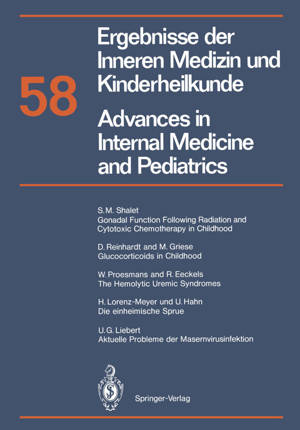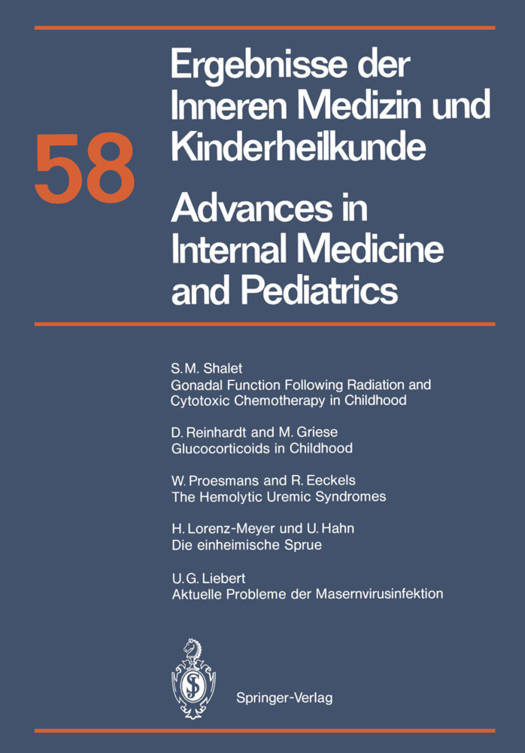
- Afhalen na 1 uur in een winkel met voorraad
- Gratis thuislevering in België vanaf € 30
- Ruim aanbod met 7 miljoen producten
- Afhalen na 1 uur in een winkel met voorraad
- Gratis thuislevering in België vanaf € 30
- Ruim aanbod met 7 miljoen producten
Zoeken
Ergebnisse Der Inneren Medizin Und Kinderheilkunde / Advances in Internal Medicine and Pediatrics
M Brandis, P Frick, K Kochsiek, G a Martini, A Prader
€ 69,45
+ 138 punten
Uitvoering
Omschrijving
More than 30 years ago the first report concerning the therapeutic use of glucocorti- coids appeared. Even if the pediatrician is aware of the large number of clinical and experimental studies that have accumulated during the past three decades he is still faced with the uncertainties of corticosteroid therapy in children's diseases especially with regard to pharmacodynamic effects and pharmacokinetics. There is no doubt that these drugs have considerably reduced morbidity and mor- tality in children suffering from asthma, nephrosis, rheumatoid arthritis, leukemia, or other diseases, but in some cases they may do more harm than the underlying disease for which they are prescribed. Thus, in order to obtain optimum benefit with mini- mum risk, the advantages of glucocorticoid therapy should be carefully considered before embarking on a program, especially one of chronic high-dose administration. 2 General Pharmacology and Physiology The primary function of corticosteroids is protection from various "stresses" in every- day life and they are involved in our ability to fight diseases, overcome trauma and cope with emotional upsets. In the mammalian adrenal gland there is a central zone, derived from the ectodermal neural crest, which produces catecholamines. This is sur- rounded by a peripheral zone, the adrenal cortex, derived from the mesodermal co- elomic epithelium, which synthesizes steroids. The fetal adrenal gland is already cap- able of synthesizing corticosteroids and by the middle trimester of pregnancy a two- way diaplacental transfer exists.
Specificaties
Betrokkenen
- Auteur(s):
- Uitgeverij:
Inhoud
- Aantal bladzijden:
- 171
- Taal:
- Duits
- Reeks:
- Reeksnummer:
- nr. 58
Eigenschappen
- Productcode (EAN):
- 9783642740435
- Verschijningsdatum:
- 16/12/2011
- Uitvoering:
- Paperback
- Formaat:
- Trade paperback (VS)
- Afmetingen:
- 170 mm x 244 mm
- Gewicht:
- 290 g

Alleen bij Standaard Boekhandel
+ 138 punten op je klantenkaart van Standaard Boekhandel
Beoordelingen
We publiceren alleen reviews die voldoen aan de voorwaarden voor reviews. Bekijk onze voorwaarden voor reviews.








